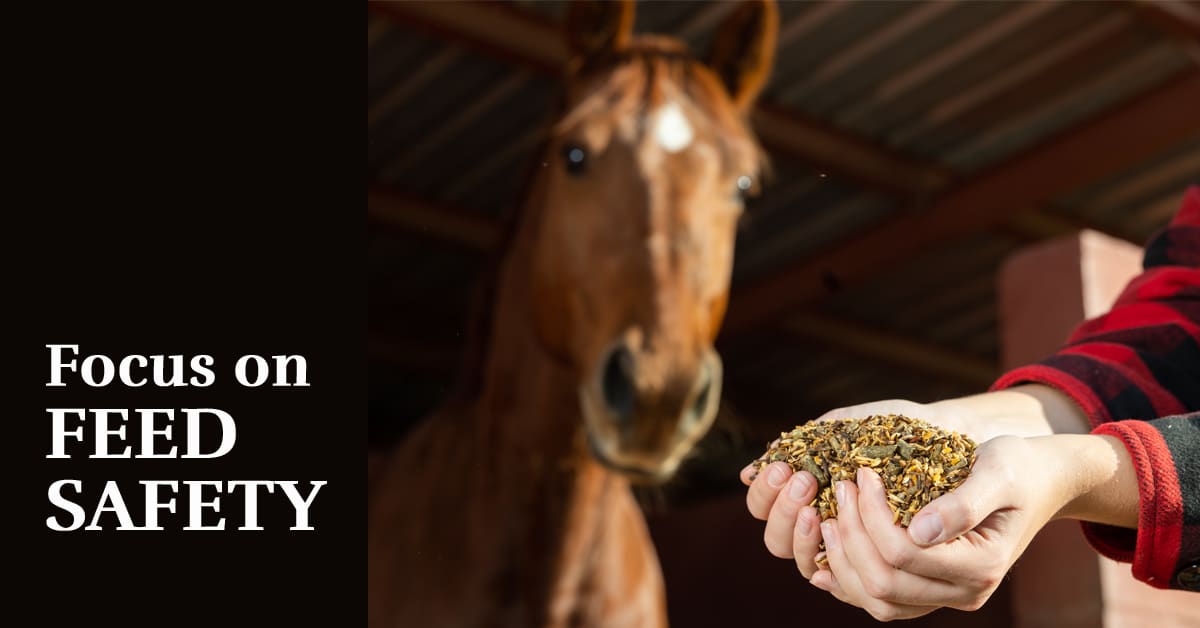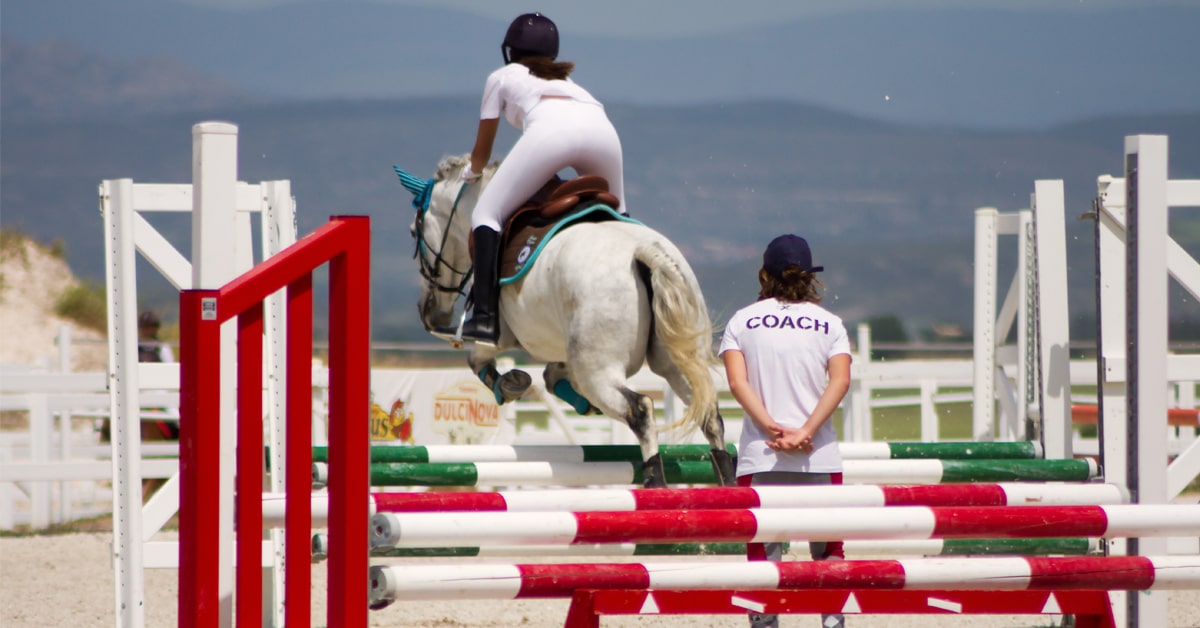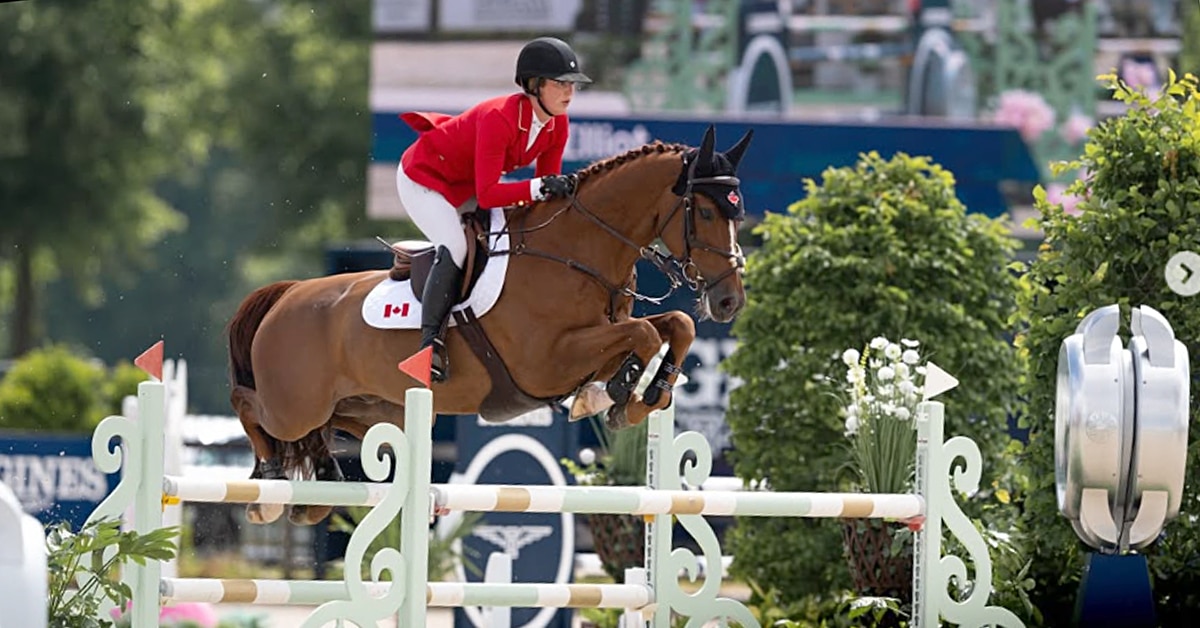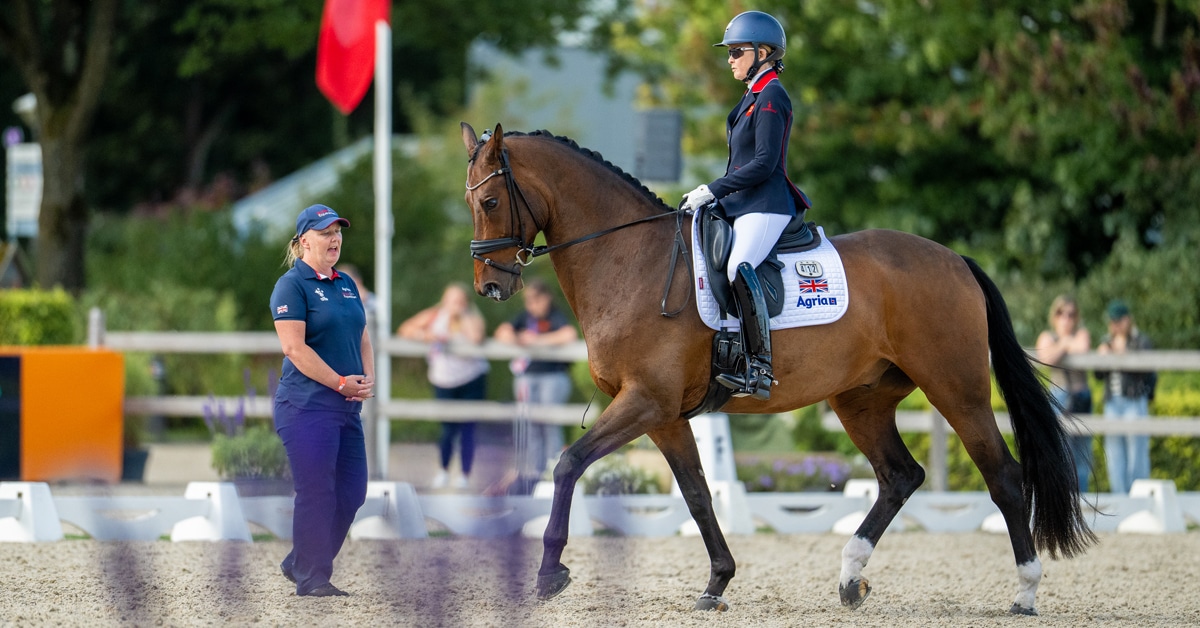Gauchesco’s story begins in Chile, where he was foaled on July 1, 1961, at Haras La Isla, by the Argentinian stallion El Gaucho out of the mare Sun Cross. Gauchesco’s racing career began as a two-year-old in his native country at the prestigious Hipodromo Chile facility. Lightly raced with just five starts in 1963, Gauchesco won one race, came third in another, and was unplaced in the remaining three races; his total earnings for 1963 were just $828.

Gauchesco and jockey Frank Barroby in the winner’s circle after the 1967 Vigil Handicap at Fort Erie. (Image courtesy of Maryland Horse, July 1968)
As a three-year-old, Gauchesco’s Chilean racing campaign began in earnest. Starting 15 times, Gauchesco had six wins and earnings totaling $4,848 for the year. In 1965, he had just eight races, winning two of them, with $2,643 in earnings.
Sometime after his 1965 racing season, Gauchesco was imported to North America by prominent Canadian Thoroughbred breeder Edward B. Seedhouse of Dane Hill Acres in Orillia, Ontario. Starting as a five-year-old and running on both Canadian and American tracks, Gauchesco pounded out 19 starts in 1966, with four wins, five seconds, and one third.
Gauchesco’s first race of 1966 occurred on May 23 at the Swynford Stakes, run at Toronto’s Greenwood Raceway over one mile. Under trainer Louis C. Cavalaris and carrying 120 pounds, Gauchesco came in second to future rival Sunstruck. Gauchesco’s first win of 1966 was on June 4 in the Eclipse Handicap. Canadian jockey Wayne Harris rode Gauchesco under the wire at Greenwood in a time of 1:58, upsetting the 1-5 favourite Sunstruck and setting a track record.
Gauchesco’s performance slipped a bit after the Eclipse Handicap. In the King Edward Gold Cup Handicap at Woodbine, he finished third and in the Dominion Day Handicap he came in fourth.
Seedhouse then set his sights on United States tracks. In his inaugural American racing premiere in Buffalo, NY, Gauchesco finished second in the Fort Erie Handicap. He ran against future rival Orbiter, who he would meet again in his next race.
Gauchesco’s first American win came in the Hazel Park Handicap at Michigan’s Hazel Park Raceway. Running third for most of the race until the home stretch, Gauchesco was unable to pass Orbiter and it seemed like Gauchesco was poised to come in second. Canadian jockey Ron Turcotte (who would later ride to international fame aboard Secretariat) switched his whip to Gauchesco’s left side and the horse was so startled by the change that he surged across the finish line ahead of Orbiter by a nose.
Gauchesco’s fourth win in 1966 is credited to the first running of the Test Handicap in Detroit, MI, after which he returned to Canadian racetracks for the remainder of the racing season.
In 1967, as a six-year-old, Gauchesco returned to his winning ways in the Vigil Stakes at the Fort Erie Racetrack. He won the Centennial Handicap at Woodbine and the Auspicious Handicap on at Fort Erie, along with three additional victories that year for $22,280 in earnings.
By 1968, the seven-year-old Thoroughbred began to show signs of slowing down. Although Gauchesco was again started in 15 races, he only won two of them. In 1969, the aged stallion was pushed to 24 starts, where he scratched out four wins, four seconds, and six thirds.
In 1970, it was clear the nine-year-old Gauchesco’s racing days were coming to an end. In all, Gauchesco had 106 lifetime starts with 24 wins, 11 seconds, and 14 thirds, bringing his total earnings to $119,564.
As with many Thoroughbred racehorses when they are no longer competing on the track, Gauchesco was retired to stud, the likely location being Dane Hill Acres.
During his time at stud, Gauchesco produced three foals in Canada who were registered as Thoroughbreds: Arnies Tillie, a grey unraced mare, Mr. Times, a bay horse who was unplaced after two starts, and a filly named Meaghan’s Memory.
In a September 1972 issue of the Calgary Herald, a small ad mentioned that a “colt by Gauchesco” sold for $2,100 to a Western buyer at Woodbine’s annual sale. In addition to the bay colt listed in the ad, Dane Hill Acres also offered a grey Canadian filly by Gauchesco, who sold to an undetermined buyer for $7,500 at the sale.
In a surprise career twist, the August 6, 1975 issue of The Canadian Champion reported Gauchesco to be at Barcrest Farms (formerly Green Hills Thoroughbred Farm), a hunter/jumper facility in Milton, Ontario. Intending to campaign Gauchesco in the show ring, the farm’s stallion manager praised Gauchesco as “the best-looking Thoroughbred I’ve ever seen.” How this chapter ended for Gauchesco is anybody’s guess.

Gauchesco displaying the conformation, height, and color sought after by the RCMP’s breeding program. (Image courtesy of sporthorsedata.com)
On December 20, 1980, Gauchesco was purchased from Waterfield Farms of Rockwood, Ontario, by the RCMP for $12,000. In addition to being 100 percent Thoroughbred, Gauchesco had a white factor of zero, which meant he was a reliable producer of black foals. At 16.2 hands tall and 1,200 pounds, Gauchesco had the height and size preferred for Musical Ride mounts as well. He had no active duty with the RMCP.
By this time, Gauchesco granddaughters and grandsons were appearing in local newspaper ads. An ad appeared in the Ottawa Citizen in 1981 for a weanling colt which had “Thoroughbred and Canadian Hunter breeding, including Gauchesco breeding.” A 1982 issue of the Ottawa Citizen listed a three-year-old “event prospect hunter gelding by Gauchesco,” who was black with three white socks and a star. He was advertised as being “over 15.3, with good conformation and temperament.” Another Ottawa Citizen ad in 1985 featured a “registered Thoroughbred and Canadian hunter black yearling filly, out of a Gauchesco mare.”
Gauchesco only enjoyed four short years at stud for the RCMP, siring 39 foals. He died at the age of 23 on May 29, 1984.
From humble beginnings as a Chilean foal to a hard campaigner on North American racetracks to an influential herd sire for the RCMP, it is here that Gauchesco’s story comes to end.
***
This article was first published in the Spring 2021 issue of the Royal Canadian Mounted Police magazine, The Quarterly.
The Latest










